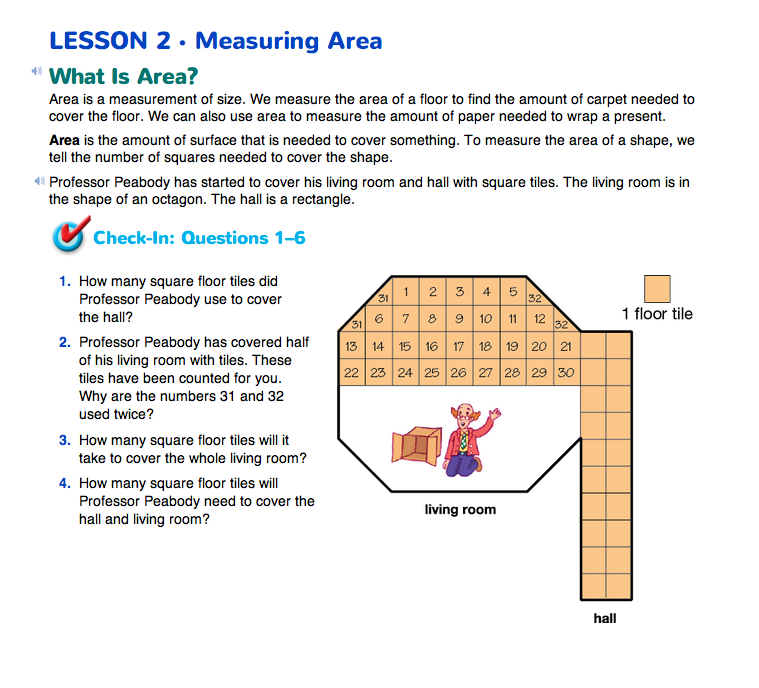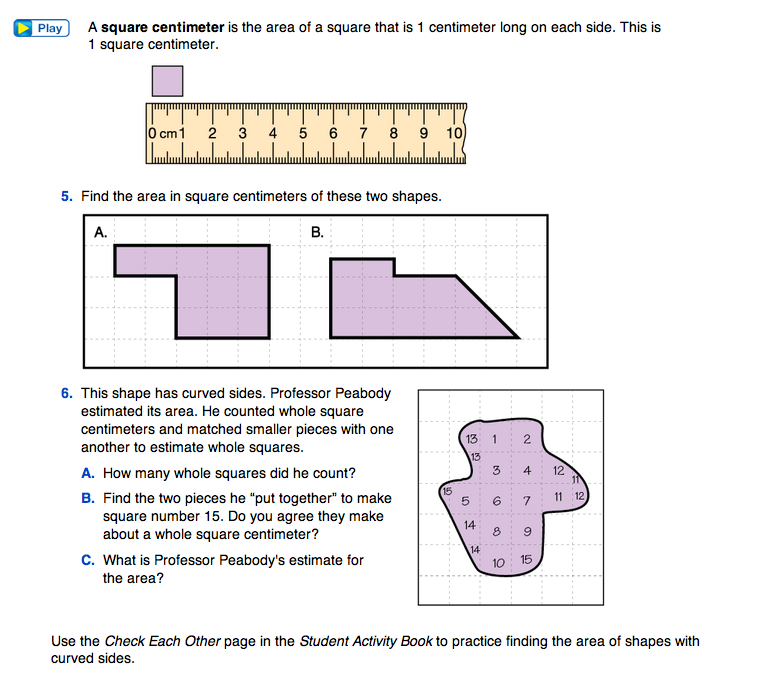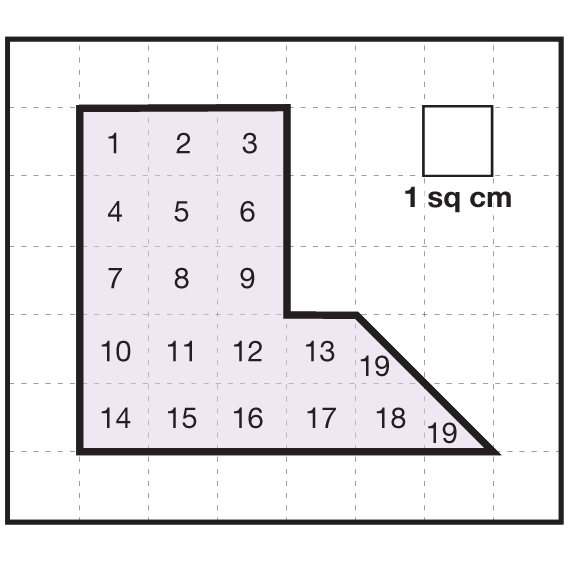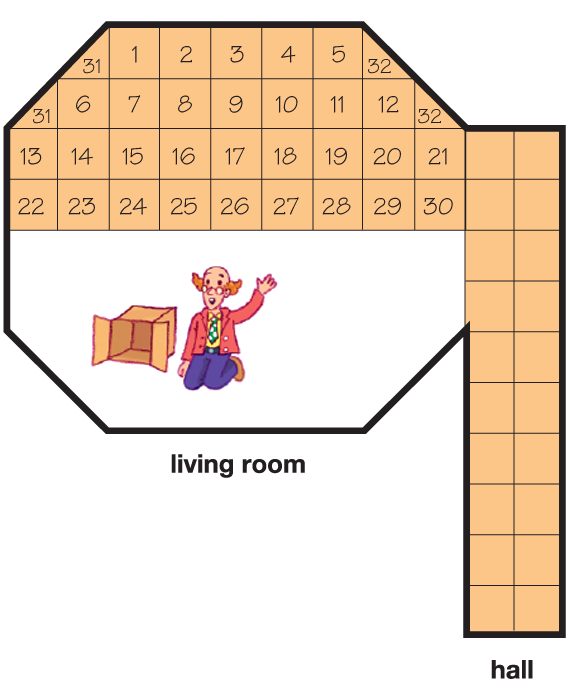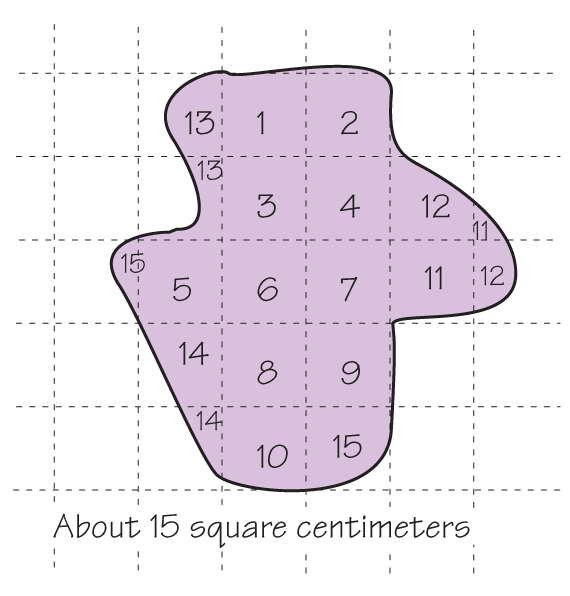Measuring Area
Est. Class Sessions: 1–2Developing the Lesson
Describe and Measure Area. Start this lesson by reviewing the concept of area and ways to measure area of irregular shapes. Display the polygon you have already drawn on the Centimeter Grid Paper Master.
Ask:
Use a clear plastic ruler to measure each side of a square. Point out that the length of each side is one centimeter, so the area of the square is one square centimeter. When we measure area, we are measuring the amount of space that is covered by a shape.
Ask a student volunteer to count the area of the polygon in square centimeters. Emphasize how parts of square centimeters can be put together. See Figure 1 for a counting example.
Display one square-inch tile and measure each side of the square in inches. Remind students that each tile covers one square inch.
Ask:
Ask students to look at the floor in the classroom.
Ask:
Ask a small group of students to find the area of the classroom floor while the rest of the class listens as they work. Other students may help this small group with counting or keep track of partial floor tiles.
Ask:
Refer students to the polygon you drew on Centimeter Grid Paper Master.
Ask:
Stress that even if the unit of measure changes, the area—the amount of surface to be covered—stays the same.
Find the Area of Professor Peabody's Living Room and Hall. Have students read the introduction to area on the Measuring Area pages in the Student Guide. Display and direct their attention to the picture and diagram that shows Professor Peabody laying tile on the floor of his living room and hall. Ask students to answer Check-In: Questions 1–6 as you circulate and observe students working.
In Question 2, students should see that Professor Peabody counted halves of tiles by “piecing” them together to make whole squares; thus, two squares can each be numbered with the same number to show that two halves together are one whole. Figure 2 shows how area can be counted this way.
In Question 3, students must help the professor calculate how many tiles he will need to cover the entire living room floor, the octagonal portion of the diagram. As shown in Figure 2, the area of the tiled portion of the living room floor is 32 tiles. Since the tiled and untiled portions are symmetrical, Professor Peabody will need an additional 32 tiles to finish the room. In Question 4, students are asked to find the area of the living room and hall.
Students may need assistance with piecing together the half squares in Shape B in Question 5. Ask a student to demonstrate their strategies for counting and keep tracking of putting pieces together using a display of Question 5.
Professor Peabody shows how he estimated the area of a shape with curved sides in Question 6. The procedure for finding the area of this shape is similar to that used in counting the area of polygons. See Figure 3. However, it will not be as easy to find appropriate matches to piece together into wholes. Emphasize that students will only be able to estimate the area of the curved shapes.













